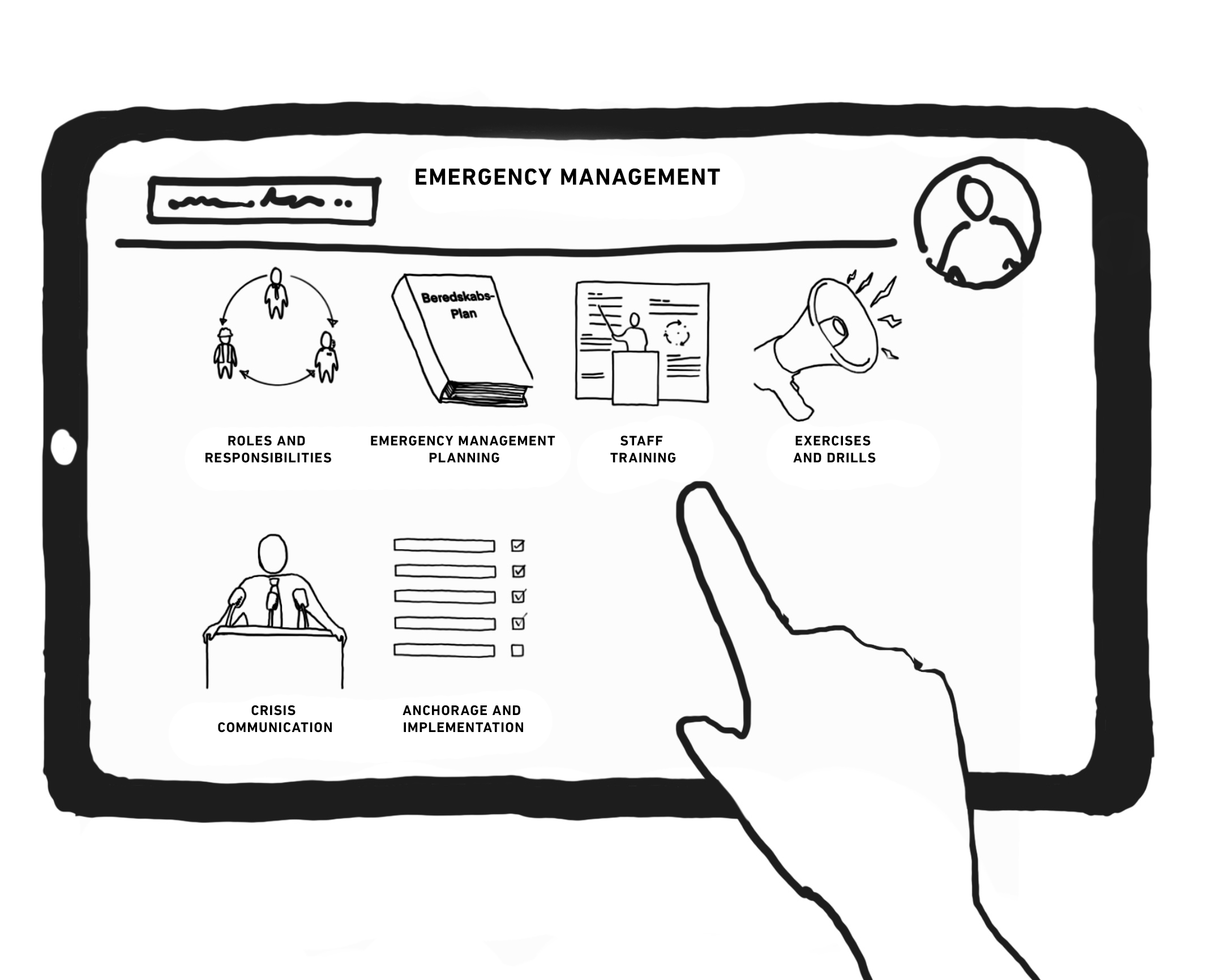Emergency management planning

In emergency management planning, one of the tasks is to prevent incidents that are beyond the scope of daily operations, i.e. the pre-phase. Through planning, training and drills, this means strengthening resilience and building capacity to deal with incidents and crises (sub-phase) that may threaten the organisation's critical processes so that operations can continue. When an incident develops to a point where it cannot be dealt with by emergency management planning, the handling of the incident should be delt with as crisis management.
At the outset, knowing when it is essential to have reservations and to what extent you need to secure your premises can be challenging. In addition to the Human Factor, the Protective Security Handbook and the risk assessment tool can help you make an initial assessment of your site or organisation's needs for protective security. However, for a full risk assessment, assistance should always be sought from an independent security advisor.
Emergency management planning takes place at three levels. The strategic level deals with the formulation and maintenance of strategies, policies and plans. First and foremost, management must take responsibility and ensure that key functions and business objectives can be maintained during a crisis. Here, it may be a good idea to formulate an overall emergency policy, which should clarify the purpose of emergency planning and who is expected to participate in the emergency work.
At the tactical level, you work on how the strategic work is carried out in the organisation.
To complement the emergency policy, an emergency programme could be drawn up, describing how the policy will be implemented. This could include prioritising areas and organising resources. Finally, the operational level is about who carries out the tasks.
The starting point for planning is to identify the critical functions of the organisation; that is, which functions are most important for the company to maintain its market position and avoid major losses. The mapping includes functions, staff, infrastructure and production and can be in the form of a list. This list must be kept as short as possible and only include the resources that are absolutely critical.
Overall, prevention and management of incidents can be handled through use of security measures and by influencing people's behaviour. The physical and electronic measures are 'hard' measures, such as bollards and access control systems at the entrance to an area. However, it is important to note that hard measures cannot stand alone. Having spent time and money on physical protective security, one should also consider emergency management planning in case of an incident. Many forget to match the training level with the equipment. Therefore, it should be ensured that the users of the building know what to do and where to go in case of an incident. This can be accomplished through communication measures, such as escape route signage and staff training. Remember that these measures are at least as important as the security measures you choose to install.
In the aftermath of an incident, it is important to be aware that employees who have been close to an incident may be severely affected psychologically. This may lead to work disruption and entail staff after-care.
In the plan, it is important to remember to include that you will provide psychological first aid and offer psychological help, to staff, that have witnessed a violent incident.
Failure to take care of people with physical and psychological injuries from an incident or a near-incident will significantly influence the company's reputation and continued operation.
Incidents and near-incidents should also be evaluated and documented. Here, the course of events is described as well as how the incident was handled, so that the organisation can learn and make improvements.


